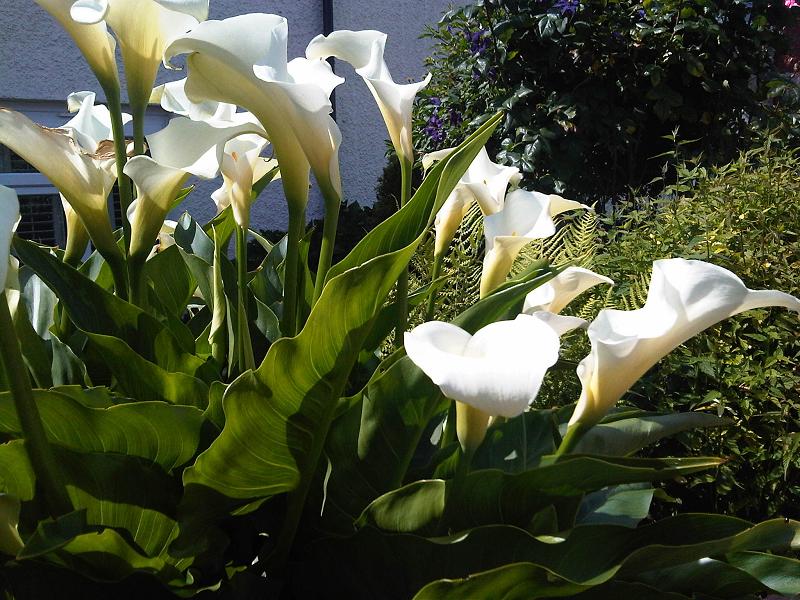
Calla lily is a rhizomatous herbaceous perennial native to southern Africa in Lesotho, South Africa, and Eswatini and is in the arum family, Araceae, that also includes jack-in-the pulpits, anthurium, and caladium. The plant grows up to 3′ tall and has long stems clustered at the base carrying arrow-shaped green leaves with lighter colored spots. From late spring to late summer the plant produces up to 12 flowering stems each carrying a single yellow, club-like, 3″ long spadix bearing many tiny fragrant flowers. Each spadix is surrounded by a showy spathe 5-10″ long. The spathe of the species is white but those of hybrids may may be cream, yellow, orange, red, pink, lavender, purple or rust . Each spadix produces about 40-50 small, oval, yellowish berries that contain several several rounded seeds. The plants are beautiful in the garden, but unfortunately are not hardy in most areas and must be dug, saved, and replanted in the spring or grown as houseplants. They are good in containers and beautiful as a cut flower. and are especially esteemed in wedding bouquets. The genus name, Zantedeschia, honors Italian botanist Giovanni Zantedeschi (1773–1846). The specific epithet, aethiopica, is derived from Aethiops, an African and son of Vulcan, the Greek God of metalworking and fire, and refers to the native range of the plant.
Type: Tender perennial
Bloom: Yellow spadix bearing tiny fragrant flowers surrounded by spathe in shades of white, cream, yellow, orange, red, pink, lavender, purple or rust; late spring to late summer
Foliage: Arrow shaped green leaves often with light color spots.
Size: 15-36” H x 18-24″ W
Light: Full sun; tolerates some shade but bloom will be less.
Soil: Fertile, moist.
Fertilizer: Fertilize in spring with a low nitrogen fertilizer such as 5-10-5 or 5-10-10.
Hardiness: Zones 8-10.
Care: Plant rhizomes 6” deep 1-2’ apart and water thoroughly; after frost has killed the foliage dig up rhizomes, dry for a few days, and then store in paper bags or cardboard boxes filled with vermiculite, peat moss, or perlite in a cool place (50-60F).
Pests and Diseases: None of significance.
Propagation: Division (seed possible but more laborious)
Companion Plants: Astilbe, hosta, primrose
Outstanding Selections:
- ‘Crowborough’ (more cold tolerant)
- ‘Green Goddess’ (has green stripes on the spathes; spathe opens wider)
- ‘Pink Mist’ (spathe has pinkish base and spadix is pink)
- ‘Red Desire’ (red spadix)
- ‘White Sail’ (very broad spathe)
Photo Credit Emoke Denes Wikimedia Commons
